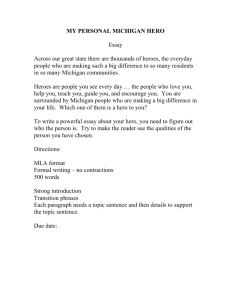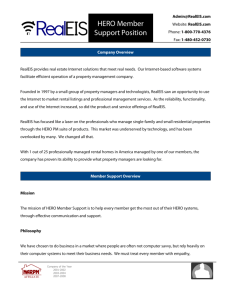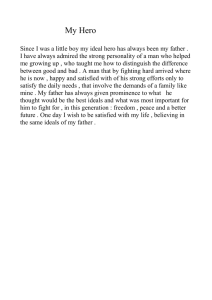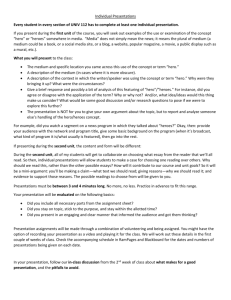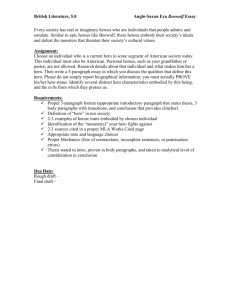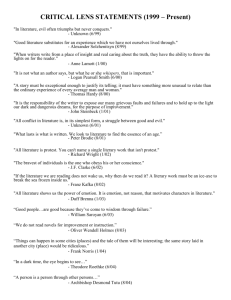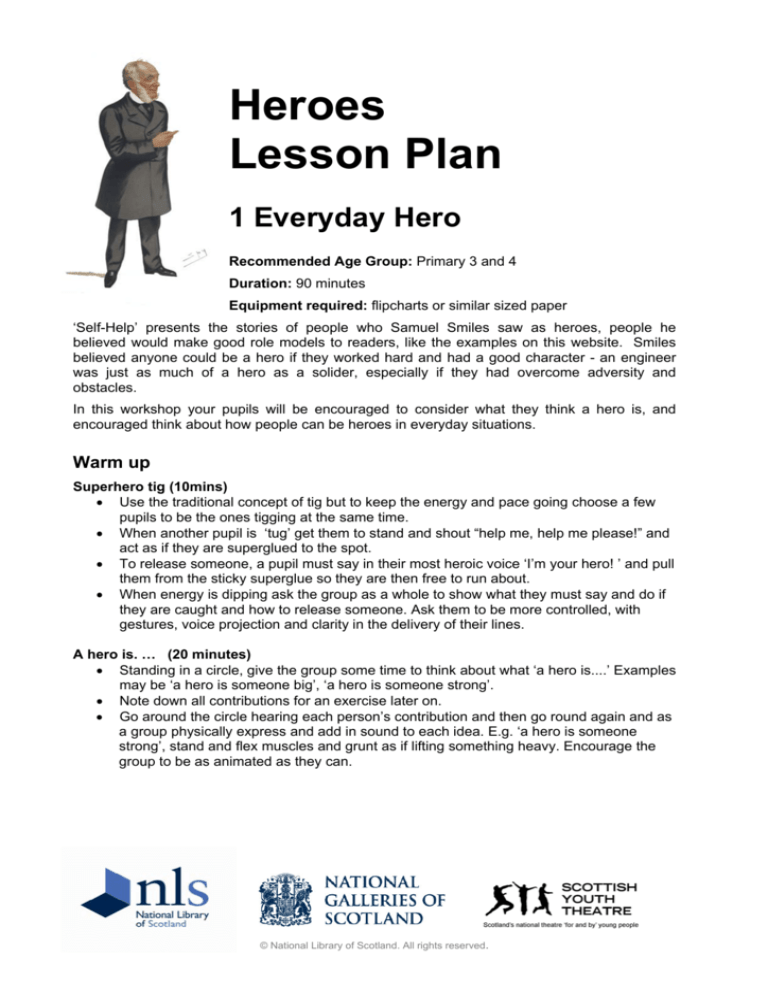
Heroes
Lesson Plan
1 Everyday Hero
Recommended Age Group: Primary 3 and 4
Duration: 90 minutes
Equipment required: flipcharts or similar sized paper
‘Self-Help’ presents the stories of people who Samuel Smiles saw as heroes, people he
believed would make good role models to readers, like the examples on this website. Smiles
believed anyone could be a hero if they worked hard and had a good character - an engineer
was just as much of a hero as a solider, especially if they had overcome adversity and
obstacles.
In this workshop your pupils will be encouraged to consider what they think a hero is, and
encouraged think about how people can be heroes in everyday situations.
Warm up
Superhero tig (10mins)
• Use the traditional concept of tig but to keep the energy and pace going choose a few
pupils to be the ones tigging at the same time.
• When another pupil is ‘tug’ get them to stand and shout “help me, help me please!” and
act as if they are superglued to the spot.
• To release someone, a pupil must say in their most heroic voice ‘I’m your hero! ’ and pull
them from the sticky superglue so they are then free to run about.
• When energy is dipping ask the group as a whole to show what they must say and do if
they are caught and how to release someone. Ask them to be more controlled, with
gestures, voice projection and clarity in the delivery of their lines.
A hero is. … (20 minutes)
• Standing in a circle, give the group some time to think about what ‘a hero is....’ Examples
may be ‘a hero is someone big’, ‘a hero is someone strong’.
• Note down all contributions for an exercise later on.
• Go around the circle hearing each person’s contribution and then go round again and as
a group physically express and add in sound to each idea. E.g. ‘a hero is someone
strong’, stand and flex muscles and grunt as if lifting something heavy. Encourage the
group to be as animated as they can.
© National Library of Scotland. All rights reserved.
Core Activity
Picture this(30mins)
• Using words from the exercise ‘a hero is...’ choose one description and as a class create
a large still picture as a representation. Be aware of different levels, using the empty
space and experiencing stillness. At this stage, start to develop a discussion ranging
from simply looking at hero clichés to examining the word and its meaning further.
• Put the class into groups of 5 or 6, give each group a different description and ask them
to create a still image to show their idea of this word.
• Show the rest of class the images created and ask them to guess the given word.
Random Relay(10minutes)
• Get pupils to stand in three equal sized queues at one of end the room. At the other end
of the room facing the pupils put three large flipcharts or sheets of paper and marker
pens. Write one of the following headings on the sheets of paper:
NAME
EVERYDAY JOB
HEROIC ACT
• On the count of GO the first person from each line runs down to the other end of the
room and writes down a response to the headings above. There is no right or wrong
answer. By answering these questions the group will create seemingly random character
names, jobs and heroic acts. This information will then be merged together to create one
story, just like a jigsaw.
• If you need more responses in each category then swap around so each group will now
be running to answer a different heading.
As a group sit down look at the listed responses and consider the following questions as a
prompt for the next activity:
- What does a hero look like?
- What are the good things about being a hero?
- What are the bad things about being a hero?
- Can a hero be a baddie?
- Does a hero need superpowers?
- When would it not be safe to be a hero?
- Can anyone be a hero?
Everyday Hero (40mins)
• Give each group a combination of responses to each of the categories above and ask
them to discuss and design a story using these ideas and then create three still pictures
to show their devised story.
• Present work and give feedback. Ask the audience if they can guess the information
each group were given from the Random Relay exercise.
Use the following questions as guidelines for discussions:
• Does a hero need superpowers? Can people’s jobs make them a hero? Could you be a
hero? When is it not safe to be a hero?
© National Library of Scotland. All rights reserved.
Endings
How to be a hero (15 minutes)
• Set aside one wall with a large piece of blank paper pinned up.
• Give each pupil some small pieces of card or post-it notes and ask them to write one
or a few words that describe the qualities needed to be a hero, e.g. kindness, hard
work.
• Encourage the pupils to stick up their ideas and then discuss as a class.
• Ask the class to think about themselves and if they could show any of these qualities
in their everyday life, e.g, kindness when someone is upset.
Potential Development
•
•
Ask your pupils to recall their roles in their ‘Everyday Hero’ story. Then ask them to
individually write their story as a picture or comic story book or short story.
Ask your class to create self-portraits of themselves doing something they enjoy or
hand-drawn or cut out collage pictures of people they think are heroes.
© National Library of Scotland. All rights reserved.



